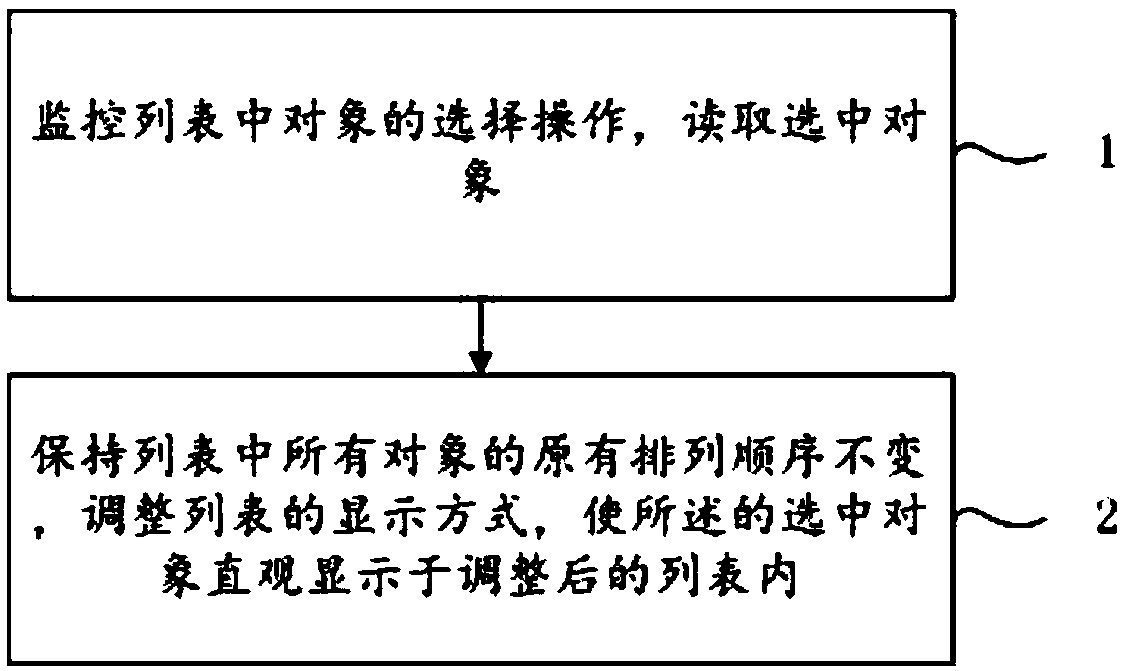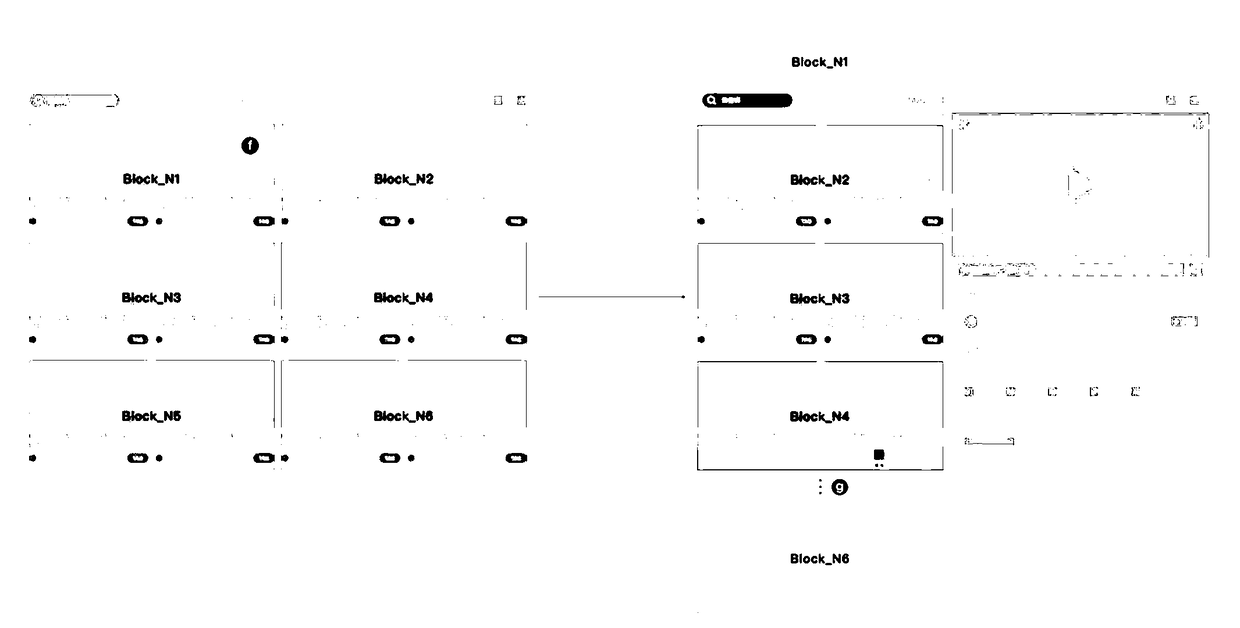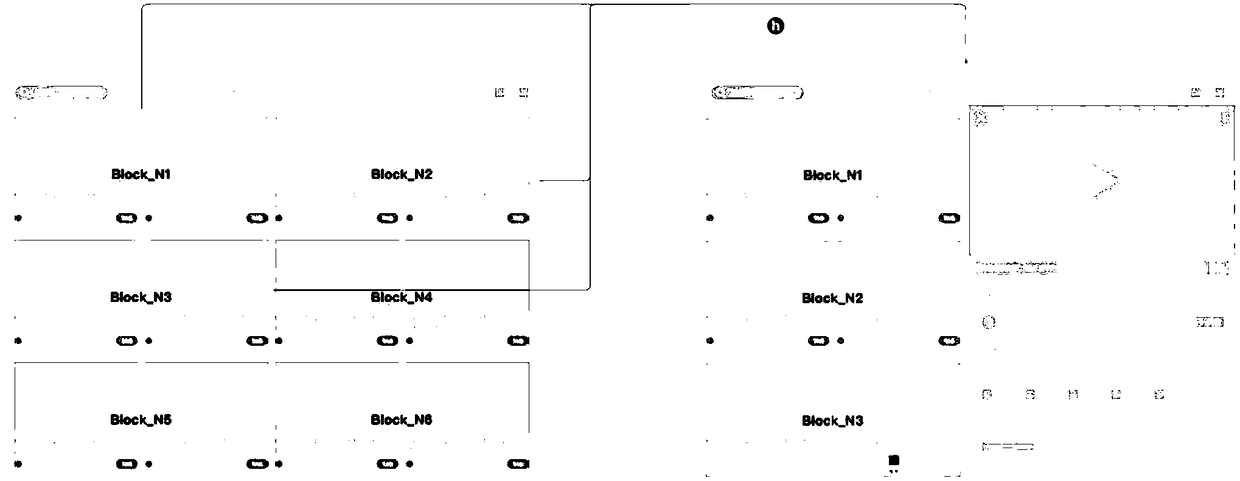List display adjustment method and device based on selected object, and storage medium
A technology for displaying lists and adjusting methods, applied in digital data information retrieval, natural language data processing, network data browsing optimization, etc., can solve problems such as cumbersome operation, reduced browsing efficiency, missed retrieval, etc. Browsing efficiency, calculating the effect of simple
- Summary
- Abstract
- Description
- Claims
- Application Information
AI Technical Summary
Problems solved by technology
Method used
Image
Examples
Embodiment 1
[0089] In this embodiment, the process of adjusting the method based on the list display of the selected object is as follows:
[0090] Such as figure 2 As shown, it is a schematic diagram of the process of adjusting the list. It can be seen from the figure that in this embodiment, the arrangement of the original list is 3*4. In the embodiment, firstly, the original list is divided into two columns, that is, two adjacent objects in each row in the list are regarded as a group, so that the original 12 objects are divided into 6 groups, and these 6 groups are divided into groups from left to right. To the right, numbered in sequence from top to bottom, the numbered results can be clearly seen from the figure. It should be noted that the original arrangement of the list in this embodiment is just an example. In practical applications, the number of rows and columns of the original list is not fixed and is determined according to the actual situation. As long as the number of co...
Embodiment 2
[0094] The list display adjustment method based on the selected object in this embodiment is basically the same as that in Embodiment 1, the difference is that in this embodiment, after the list is adjusted to a single-column display, the user chooses to return to the original display mode. The currently selected object can still be visually displayed on the display page, so it is necessary to perform focus tracking again, that is, to find the starting object in the current single-column list. The basis for determining the starting object in this embodiment is: in In the single-column list on the display page, calculate whether the height of the exposed part of the first row of the single-column list exceeds 1 / 2 of the row height (the basis for determining the starting object is not unique, for example, the specified exposed height does not have to exceed 1 / 2, or other parameters determined by the user according to the actual situation), if it exceeds, the grouping result corr...
Embodiment 3
[0096]The list display adjustment method based on the selected object in this embodiment is basically the same as the process in Embodiment 2, the difference is that in this embodiment, after the list is changed into a single-column list, no scrolling operation is performed on the single-column list, that is, the single-column The display of the list has not changed, that is to say, if the single-column list is returned to the original arrangement, the returned result is exactly the same as the initial list, so there is no need to judge the starting object of the single-column list at this time, and return directly The layout of the initial list is enough, which can reduce the workload of calculation and improve the adjustment efficiency.
PUM
 Login to View More
Login to View More Abstract
Description
Claims
Application Information
 Login to View More
Login to View More - R&D
- Intellectual Property
- Life Sciences
- Materials
- Tech Scout
- Unparalleled Data Quality
- Higher Quality Content
- 60% Fewer Hallucinations
Browse by: Latest US Patents, China's latest patents, Technical Efficacy Thesaurus, Application Domain, Technology Topic, Popular Technical Reports.
© 2025 PatSnap. All rights reserved.Legal|Privacy policy|Modern Slavery Act Transparency Statement|Sitemap|About US| Contact US: help@patsnap.com



